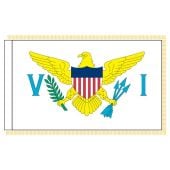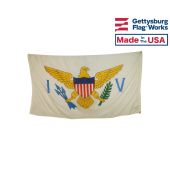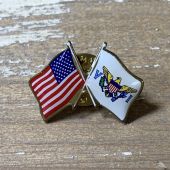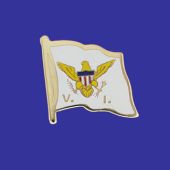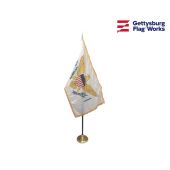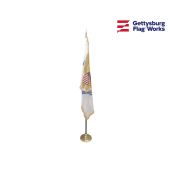US Virgin Islands Flags
Flag of the USVI
The United States Virgin Islands make up an insular area of the United States rather than being an independent nation or a state, but they still have a flag of their own. United States Virgin Islands flags have a relatively simple design that serves to emphasize their connection with the rest of the United States while also including subtle references to the islands themselves in order to make sure that they can represent the people of the islands as well as their relationship with the rest of the nation.
Colors and Symbolism of Virgin Islands Flags
The USVI flag is based on the coat of arms of the United States of America. It has a solid white field with an eagle placed between the letters "V" and "I." The eagle is depicted in gold and grasps a set of three arrows in one talon and an olive branch in the other. A shield with a blue stripe running across the top and alternating stripes of red and white stretching down from the blue stripe is placed over the eagle's chest.
The eagle represents the United States of America. The olive branch that it holds is a symbol of peace, while the three arrows in the eagle's other talon stand for the three major islands of the USVI. The colors of the USVI flag also have symbolic meaning. The red section is used to represent love, while the white stands for the clouds above the islands, the blue stands for the water that surrounds them, green represents their hills, and yellow stands for their flowers.
History of the USVI Flag
The USVI was initially represented with the flag of the United States, but their third governor decided that they should have a flag of their own. A cartoonist named Percival Wilson Sparks produced the design for modern United States Virgin Islands flags in 1921 at the request of the new governor of the islands, Sumner Ely Whitmore Kitelle. The design came into official use later that year, and it has been employed as the primary symbol of the United States Virgin Islands ever since. The flag's design proved to be popular, so it has never been changed or replaced.
